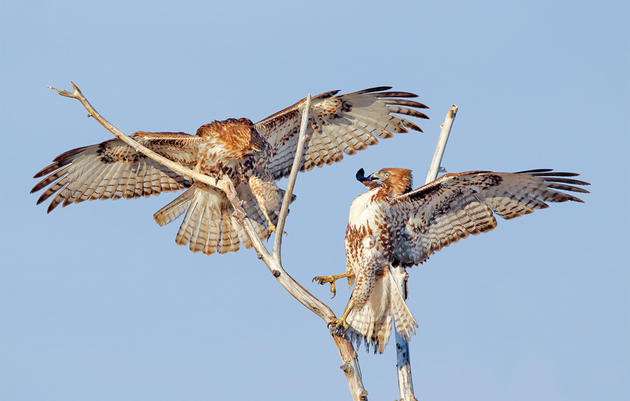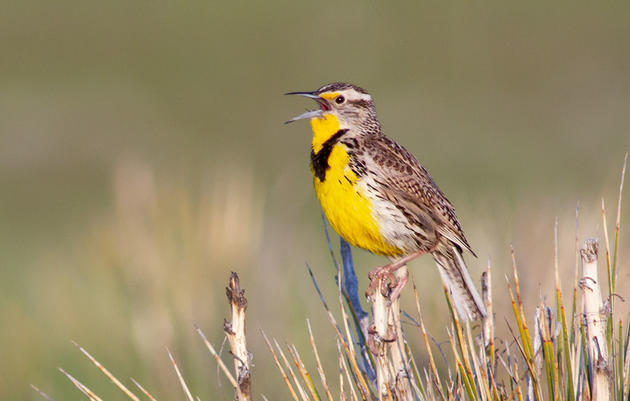FORT COLLINS, Colo. (August 21, 2019) – Governor Jared Polis announced today an executive order to conserve the lands that Colorado’s iconic wildlife depend upon for migration. While the order focuses on large mammals, the landscapes it protects are critical for Colorado’s wild birds too.
“These wild places are vital for birds that breed, winter, and migrate through Colorado. The protections that Governor Polis has set in motion through this order will benefit many species and set important standards throughout the state,” said Nada Culver, Vice President of Public Lands and Senior Policy Counsel for the National Audubon Society.
“Migrating birds flock to the same places of high protein, cover and water that large mammals use on during their migrations,” explained Audubon’s vice president and Sagebrush Ecosystem Initiative director Brian Rutledge. “The fact that our hooved animals need these sites simply demonstrates their value to all. Small mammals, ground dwelling birds and reptiles and amphibians all share in the wealth of these places.”
The order directs the Colorado Department of Transportation to enable safe wildlife passage and reduce wildlife-vehicle collisions, which helps to protect people, big game and raptors that are also drawn to carrion. The Colorado Department of Natural Resources (DNR) will identify the location of big game around the state, continually updating this information to evaluate both threats and data gaps. The DNR will also “identify policy, regulatory and legislative opportunities to ensure ongoing conservation of seasonal big game habitat and migration corridors based on the latest available scientific data,” according to the order.
The order will ensure that data are collected and all avenues for protection can be generated in a way that is grounded in science and then enforced throughout the state. The measures will benefit not only big game, but also birds and the many other species that depend on the same lands.
“Wildlife species like deer, pronghorn and elk have shown us their pathways since humans first set foot on Earth. What we so seldom understand is that they were also showing us the strongest, most valuable places for all of our beloved wildlife,” said Rutledge. “This is a critical time for action,” said Culver, “and we applaud the Polis administration for taking a strong stand to protect wildlife when it is being threatened by both climate change and the federal government’s apparent rush to sacrifice important habitat on our public lands.”
###
About Audubon
The National Audubon Society protects birds and the places they need, today and tomorrow. Audubon works throughout the Americas using science, advocacy, education, and on-the-ground conservation. State programs, nature centers, chapters, and partners give Audubon an unparalleled wingspan that reaches millions of people each year to inform, inspire, and unite diverse communities in conservation action. A nonprofit conservation organization since 1905, Audubon believes in a world in which people and wildlife thrive. Learn more at www.audubon.org and on Facebook, Twitter and Instagram @audubonsociety.
Audubon Rockies, the regional National Audubon Society office for Colorado, Wyoming, and Utah, conserves and restores natural ecosystems, focusing on birds, other wildlife, and their habitats for the benefit of humanity and the earth’s biological diversity. Learn more at rockies.audubon.org and by following us on Facebook, Twitter and Instagram at @audubonrockies.
Media Contact
Evan Barrientos
ebarrientos@audubon.org
(970) 416-6931 Ext. 4






